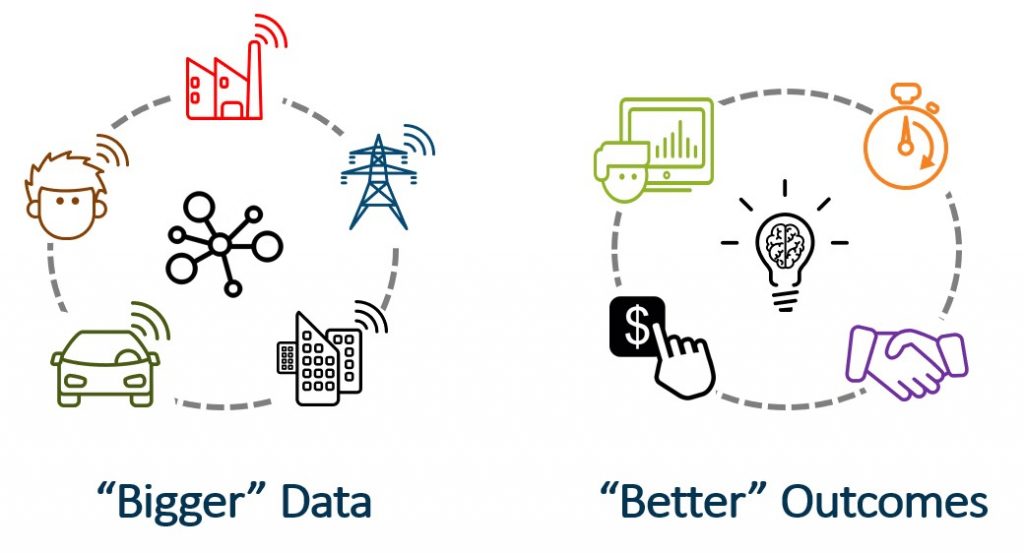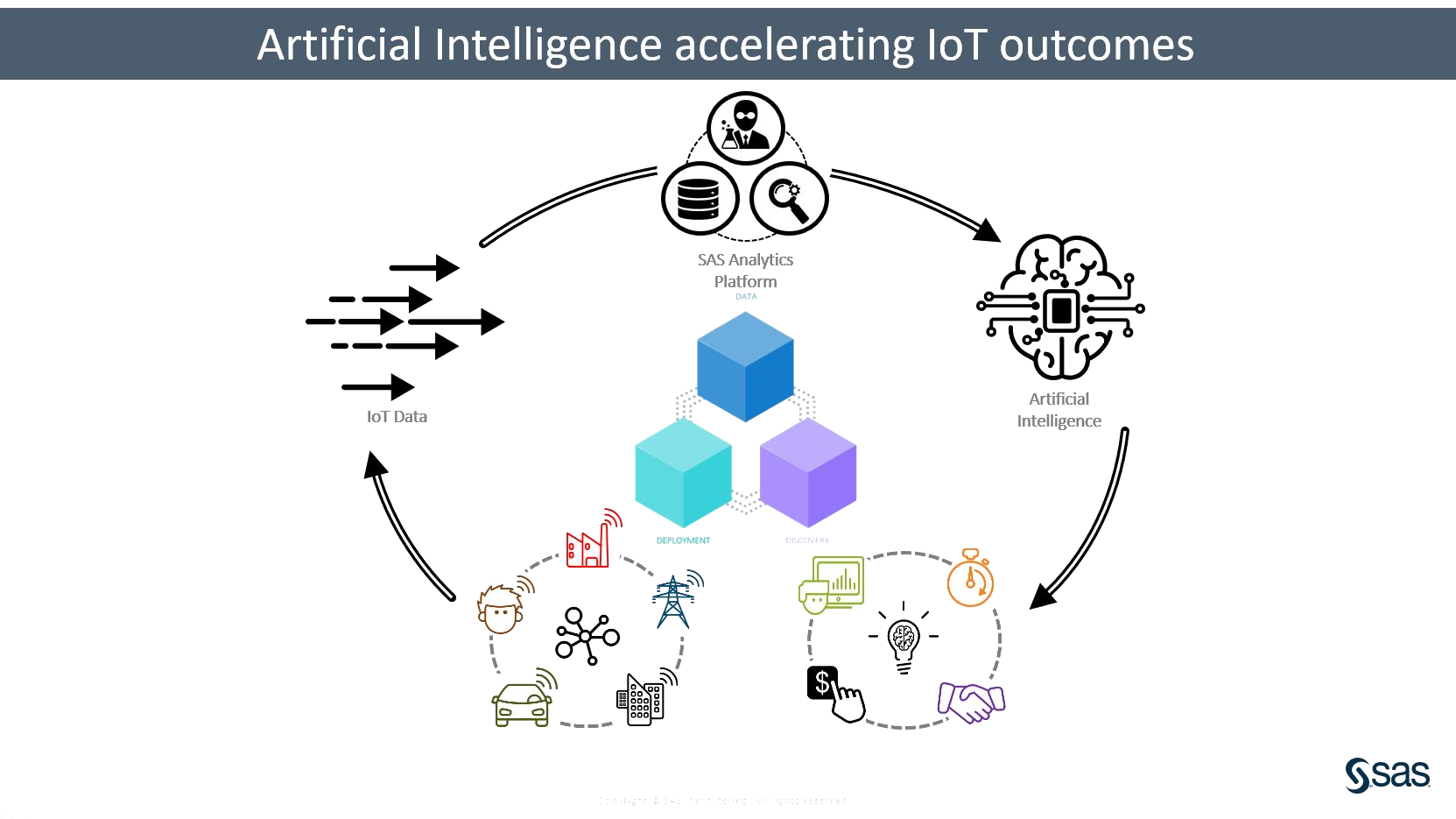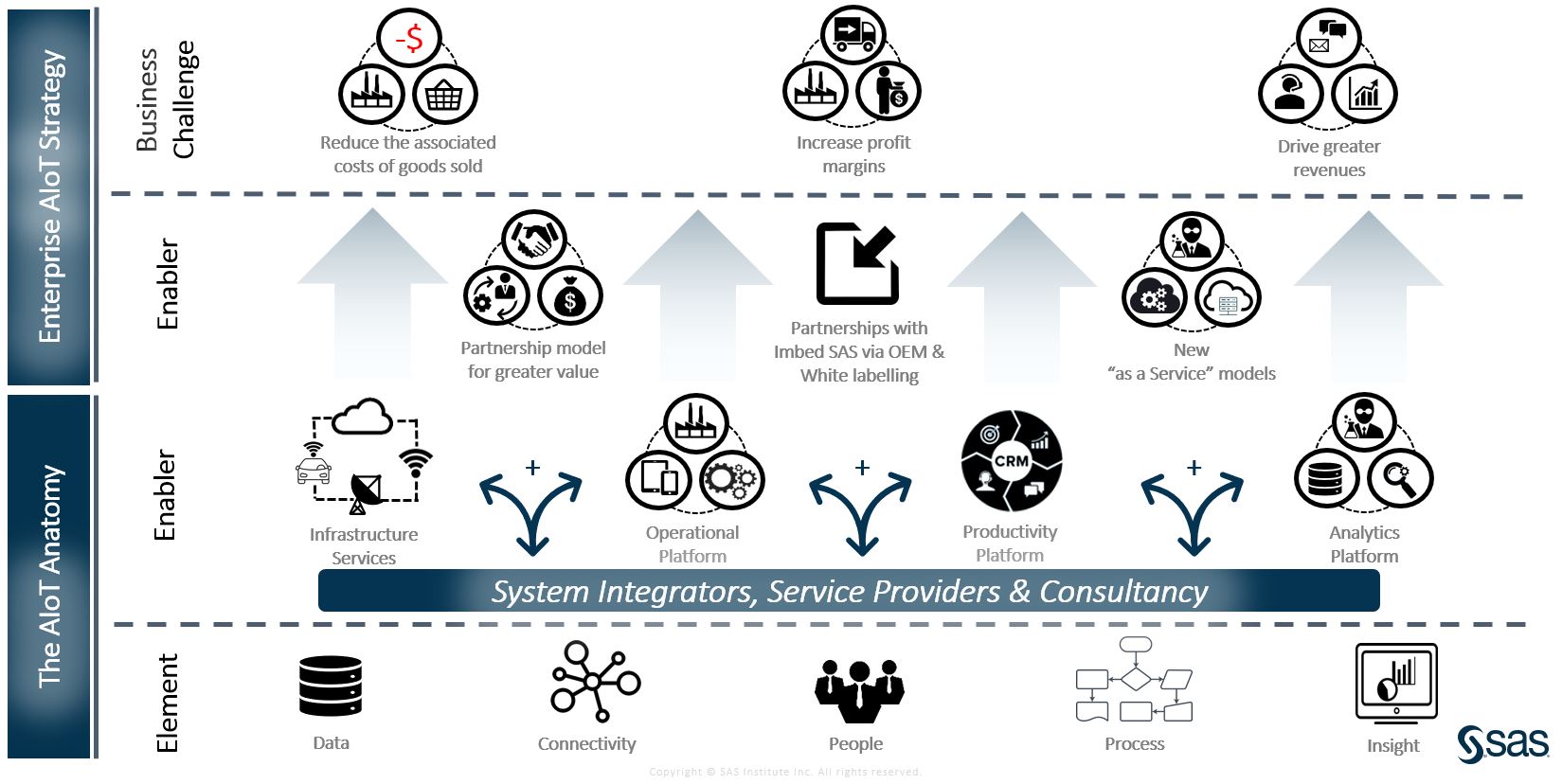There will be more than 55 billion IoT devices by 2025 – more than four devices for every person on earth. That means that big data is only getting bigger. All of that high frequency, high velocity data from connecting the physical world to the digital world is available, and not analysing it effectively is a missed opportunity for better business outcomes.

The highest priority for growing businesses? Deeper insight, faster information, greater collaboration and new commercial ideas. That’s where IoT data comes in. But the sheer volume and speed of IoT data requires artificial intelligence, and the link between the two is advanced analytics.

Unlocking the value of IoT data requires the ability to digest high volumes of data from multiple sources. Taking a platform approach provides a flexible framework that delivers IoT value and successful the outcomes.
Where do CAOs and CTOs need to focus?
As covered in a recent McKinsey study, the Chief Analytics Officer (CAO) role has morphed into a catalyst for business change and greater efficiencies. But the CAO can’t do this alone, and the question becomes: How can the CAO and Chief Technology Officer (CTO) best work together to drive innovation strategy?
The first battle has to be the common understanding of the language used in analytics. One person’s AI is another person’s ‘black magic.’ When reviewing technology; should you buy or build? Best-in-class or single vendor strategy? Decisions, decisions…
Strategic decisions and answers to these questions are subjective and relative to the business issue being addressed. But when you look deeper into the required ecosystems that define an IoT strategy, analytics is the link that supports a complimentary strategy.
Unlocking the value of IoT data requires the ability to digest high volumes of data from multiple sources. Taking a platform approach provides a flexible framework that delivers IoT value and successful the outcomes.
What do CAOs and CTOs need to focus on?
As covered in a recent McKinsey study, the Chief Analytics Officer (CAO) role has morphed into a catalyst for business change and greater efficiencies. But the CAO can’t do this alone, and the question becomes: How can the CAO and Chief Technology Officer (CTO) best work together to drive innovation strategy?
The first battle has to be the common understanding of the language used in analytics. One person’s AI is another person’s ‘black magic.’ When reviewing technology; should you buy or build? Best-in-class or single vendor strategy? Decisions, decisions…
SAS and Jason Mann invite you to attend the 2019 IoT Solutions World Congress in Barcelona. See our keynote presentations, featured sessions in IoT and Health Care Tracks and meet us and our IoT partners at booth C311.
Strategic decisions and answers to these questions are subjective and relative to the business issue being addressed. But when you look deeper into the required ecosystems that define an IoT strategy, analytics is the link that supports a complimentary strategy.
As McKinsey wrote, CAOs need to focus on:
- Convening a coalition of equals, especially with the CTO.
- Building an enterprise analytics capability.
- Integrating advanced analytics into the workflow.
- Acting as a change agent.
- Advising their boards and CEOs.
Integrating these key focus areas into IoT projects is critical to getting at the hidden value in IoT data. In figure 1, I have simplified what I believe to be the key elements in an IoT capability: Data, connectivity, people, process and insight.
The CAO provides the skills and knowledge for unlocking the value of IoT data. By integrating, visualizing and transforming diverse and voluminous IoT data from multiple processes and sources and applying advanced analytics and AI capabilities, the organization is able to share insights and democratize analytics via their platforms. This goes beyond the simple analytics, statistical models, and business rules that most ‘IoT platforms’ boast today.

Figure 1: Key Focus Areas in Need of Integration to Realize Value from IoT Data
Four questions you need to ask your software vendor
Don’t be fooled by vendors that simply state the buzz words instead of proving capability. Businesses need to ask the difficult questions:
- How does this work at scale?
- Can data scientists use this technology to develop capabilities specific to my organization?
- How experienced is my business at developing advanced analytics capabilities?
- AI is an interactive and cyclical process that requires structure to enhance its capabilities to support true value. How does my architecture support this?
These questions are not designed to highlight vendors’ limitations, but to highlight the fact that taxonomy and standards are so subjective in our industries right now. A teen-ager could start a business in his basement, state he was an AI expert, create a pretty logo and get credibility quite quickly.
Think of it this way: If you’re sick and are worried that you have the plague, a quick Google search can probably rule it out. But if your concerns are genuine and Google says you have all the symptoms of the plague, you’ll get yourself to the doctor immediately. Why? Because they’re experts who’ve trained for years. We trust experience over amateur self-diagnosis.
This is true for analytics platforms, too. Most technology-savvy enthusiasts can use open source and maybe a smart algorithm to validate a hypothesis around analytics quite quickly. But ask yourself: What makes this the right technology to entrust serious business decisions and serious commercial implications?
You need reassurance that these capabilities have pedigree, years of investment and development, and have led to processes and techniques that deliver the value you seek.
So where am I going with this? As the term AI grows ever more important, so do the questions around how much we should trust the outputs of AI -- ranging from autonomous cars to manufacturing automation to personalised chatbots guiding you through a shopping experience.
Where do we go from here?
AI is here, and looks to become a common term around how we can understand digital interaction, but we need to ask a few questions over and above blind faith. The IoT is the connection of digital to physical, and the association of AI to manage the data generated from these capabilities is also becoming synonymous with IoT. SAS defines this as the artificial intelligence of things (AIoT).
It’s key to include CAOs, CTOs and others who understand the complexities of advanced analytics within any early phase around new business initiatives. The AIoT can turn IoT data into new revenue streams, exciting business models, optimized operational environments and differentiated customer experiences.
My advice: Don’t be intimidated by the hype, ask hard questions and think big. The opportunities are there, you just need to put some effort into finding them and understanding what’s being presented to you.
To learn more, check out these two new white papers: AI Momentum, Maturity and Models for Success and The Artificial Intelligence of Things.
